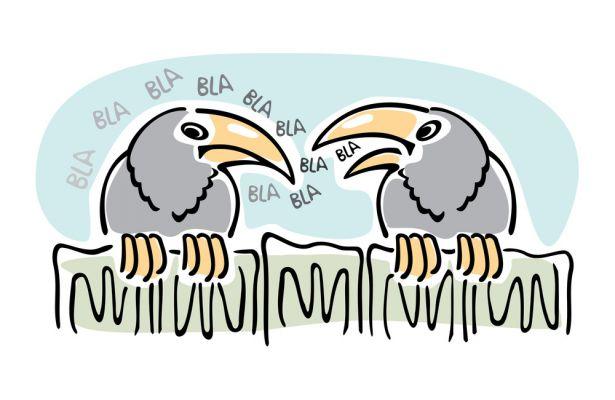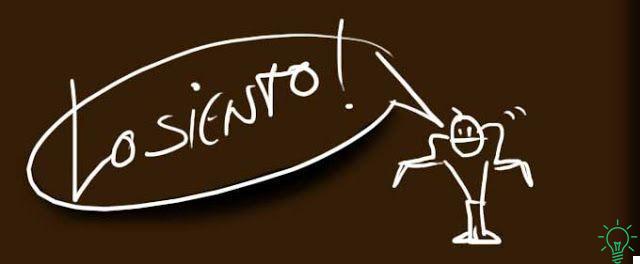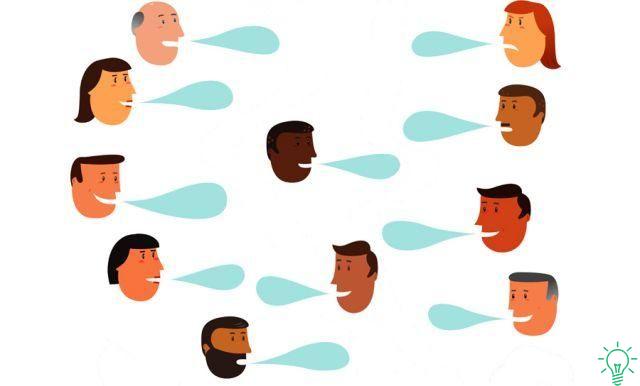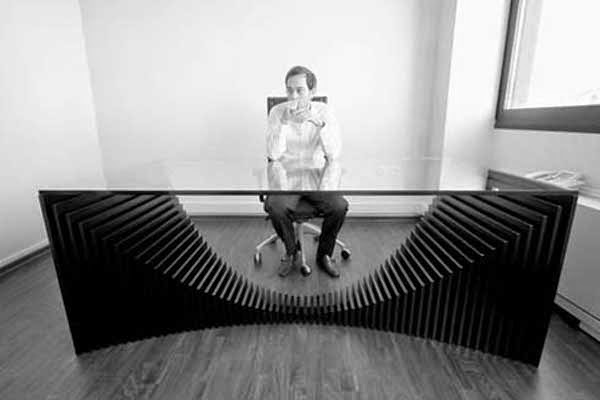 One of the essential objectives of some governments and of the various judicial systems, and we add many psychologists, is to be able to determine more and more precisely when a person lies. For this purpose, the most curious and gruesome inventions have developed over time, numerous artifacts which can be given the generic name of: lie detectors. We have all realized that these machines do not perform quite well, so that new trends are currently emerging: truth tests. These tests are normally based on the identification of small non-verbal signals, one of the most recent is based on being able to capture micro-expressions (those small expressions that last a few seconds and which would reveal our real emotional state and, therefore, would reveal our lies) . However, today we will face a totally different principle used to uncover lies. Implicit attitudes can tell a lot about people, for example, if a person is very absorbed while driving, with good confidence we could say that they have been doing it for a long time. Using reaction time as a starting point came the: IAT (Implicit Aptitude Test). Reaction time is an idea quite used in psychology, above all because it allows, with a certain degree of objectivity, to obtain quantifiable correlations. But… how does this test work? Let's imagine we want to know if someone lied to us about a theft. It is enough to put the individual in question in front of a computer and tell him that he will see some sentences appearing that refer to his personal characteristics. He will have to select the option that best describes him as quickly as possible. The first sentences will be of a neutral type: I am male, I am female ... among all these sentences some are introduced that refer to the fact that it is necessary to ascertain, such as: "I stole ..." These people are supposed to react more slow in the face of these sentences since they have to reflect on the consequences of their responses. The innocent will be able to respond immediately as they have no alternative option to ramble on. Obviously, the questions on the test are meant to promote guilt and reflection that delay answering. In the end, the software calculates the average of the time taken to react and establishes the variance (how much each individual response varies on average). If the latter is statistically significant then there is a good chance that the person lied. But… does this test really work? This is precisely what the Verschuere group asked themselves. The experiment was carried out with 80 university students who were divided into two groups. The first group was asked to steal the year-end exam. The second group was informed of this theft through the faculty internal diary. When the students first took the test this appeared to be 100% effective but later the researchers trained some students in the second group to be slower in their responses to neutral stimuli. This, of course, totally confused the computer results allowing the perpetrators to go freely. In conclusion, this test is effective, but like any other proof of truth it is falsifiable. However, there is no method that is 100% effective in determining whether a person is lying or not.
One of the essential objectives of some governments and of the various judicial systems, and we add many psychologists, is to be able to determine more and more precisely when a person lies. For this purpose, the most curious and gruesome inventions have developed over time, numerous artifacts which can be given the generic name of: lie detectors. We have all realized that these machines do not perform quite well, so that new trends are currently emerging: truth tests. These tests are normally based on the identification of small non-verbal signals, one of the most recent is based on being able to capture micro-expressions (those small expressions that last a few seconds and which would reveal our real emotional state and, therefore, would reveal our lies) . However, today we will face a totally different principle used to uncover lies. Implicit attitudes can tell a lot about people, for example, if a person is very absorbed while driving, with good confidence we could say that they have been doing it for a long time. Using reaction time as a starting point came the: IAT (Implicit Aptitude Test). Reaction time is an idea quite used in psychology, above all because it allows, with a certain degree of objectivity, to obtain quantifiable correlations. But… how does this test work? Let's imagine we want to know if someone lied to us about a theft. It is enough to put the individual in question in front of a computer and tell him that he will see some sentences appearing that refer to his personal characteristics. He will have to select the option that best describes him as quickly as possible. The first sentences will be of a neutral type: I am male, I am female ... among all these sentences some are introduced that refer to the fact that it is necessary to ascertain, such as: "I stole ..." These people are supposed to react more slow in the face of these sentences since they have to reflect on the consequences of their responses. The innocent will be able to respond immediately as they have no alternative option to ramble on. Obviously, the questions on the test are meant to promote guilt and reflection that delay answering. In the end, the software calculates the average of the time taken to react and establishes the variance (how much each individual response varies on average). If the latter is statistically significant then there is a good chance that the person lied. But… does this test really work? This is precisely what the Verschuere group asked themselves. The experiment was carried out with 80 university students who were divided into two groups. The first group was asked to steal the year-end exam. The second group was informed of this theft through the faculty internal diary. When the students first took the test this appeared to be 100% effective but later the researchers trained some students in the second group to be slower in their responses to neutral stimuli. This, of course, totally confused the computer results allowing the perpetrators to go freely. In conclusion, this test is effective, but like any other proof of truth it is falsifiable. However, there is no method that is 100% effective in determining whether a person is lying or not.
 One of the essential objectives of some governments and of the various judicial systems, and we add many psychologists, is to be able to determine more and more precisely when a person lies. For this purpose, the most curious and gruesome inventions have developed over time, numerous artifacts which can be given the generic name of: lie detectors. We have all realized that these machines do not perform quite well, so that new trends are currently emerging: truth tests. These tests are normally based on the identification of small non-verbal signals, one of the most recent is based on being able to capture micro-expressions (those small expressions that last a few seconds and which would reveal our real emotional state and, therefore, would reveal our lies) . However, today we will face a totally different principle used to uncover lies. Implicit attitudes can tell a lot about people, for example, if a person is very absorbed while driving, with good confidence we could say that they have been doing it for a long time. Using reaction time as a starting point came the: IAT (Implicit Aptitude Test). Reaction time is an idea quite used in psychology, above all because it allows, with a certain degree of objectivity, to obtain quantifiable correlations. But… how does this test work? Let's imagine we want to know if someone lied to us about a theft. It is enough to put the individual in question in front of a computer and tell him that he will see some sentences appearing that refer to his personal characteristics. He will have to select the option that best describes him as quickly as possible. The first sentences will be of a neutral type: I am male, I am female ... among all these sentences some are introduced that refer to the fact that it is necessary to ascertain, such as: "I stole ..." These people are supposed to react more slow in the face of these sentences since they have to reflect on the consequences of their responses. The innocent will be able to respond immediately as they have no alternative option to ramble on. Obviously, the questions on the test are meant to promote guilt and reflection that delay answering. In the end, the software calculates the average of the time taken to react and establishes the variance (how much each individual response varies on average). If the latter is statistically significant then there is a good chance that the person lied. But… does this test really work? This is precisely what the Verschuere group asked themselves. The experiment was carried out with 80 university students who were divided into two groups. The first group was asked to steal the year-end exam. The second group was informed of this theft through the faculty internal diary. When the students first took the test this appeared to be 100% effective but later the researchers trained some students in the second group to be slower in their responses to neutral stimuli. This, of course, totally confused the computer results allowing the perpetrators to go freely. In conclusion, this test is effective, but like any other proof of truth it is falsifiable. However, there is no method that is 100% effective in determining whether a person is lying or not.
One of the essential objectives of some governments and of the various judicial systems, and we add many psychologists, is to be able to determine more and more precisely when a person lies. For this purpose, the most curious and gruesome inventions have developed over time, numerous artifacts which can be given the generic name of: lie detectors. We have all realized that these machines do not perform quite well, so that new trends are currently emerging: truth tests. These tests are normally based on the identification of small non-verbal signals, one of the most recent is based on being able to capture micro-expressions (those small expressions that last a few seconds and which would reveal our real emotional state and, therefore, would reveal our lies) . However, today we will face a totally different principle used to uncover lies. Implicit attitudes can tell a lot about people, for example, if a person is very absorbed while driving, with good confidence we could say that they have been doing it for a long time. Using reaction time as a starting point came the: IAT (Implicit Aptitude Test). Reaction time is an idea quite used in psychology, above all because it allows, with a certain degree of objectivity, to obtain quantifiable correlations. But… how does this test work? Let's imagine we want to know if someone lied to us about a theft. It is enough to put the individual in question in front of a computer and tell him that he will see some sentences appearing that refer to his personal characteristics. He will have to select the option that best describes him as quickly as possible. The first sentences will be of a neutral type: I am male, I am female ... among all these sentences some are introduced that refer to the fact that it is necessary to ascertain, such as: "I stole ..." These people are supposed to react more slow in the face of these sentences since they have to reflect on the consequences of their responses. The innocent will be able to respond immediately as they have no alternative option to ramble on. Obviously, the questions on the test are meant to promote guilt and reflection that delay answering. In the end, the software calculates the average of the time taken to react and establishes the variance (how much each individual response varies on average). If the latter is statistically significant then there is a good chance that the person lied. But… does this test really work? This is precisely what the Verschuere group asked themselves. The experiment was carried out with 80 university students who were divided into two groups. The first group was asked to steal the year-end exam. The second group was informed of this theft through the faculty internal diary. When the students first took the test this appeared to be 100% effective but later the researchers trained some students in the second group to be slower in their responses to neutral stimuli. This, of course, totally confused the computer results allowing the perpetrators to go freely. In conclusion, this test is effective, but like any other proof of truth it is falsifiable. However, there is no method that is 100% effective in determining whether a person is lying or not.


























